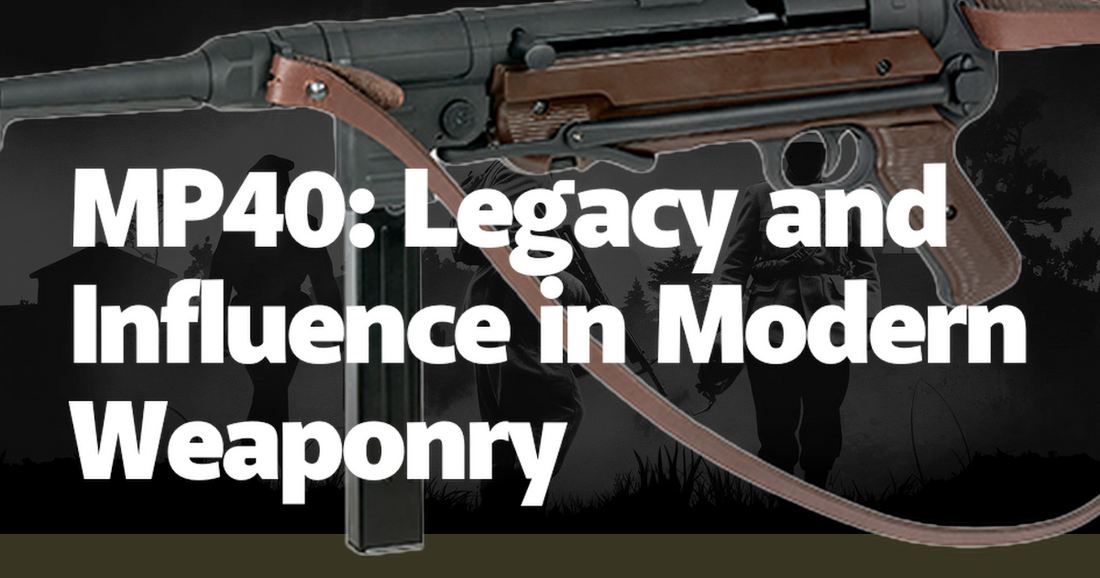The MP40, a submachine gun that etched its name into the annals of military history, was not just a weapon but a symbol of innovation during World War II. Developed by Nazi Germany, it became an iconic tool of warfare, known for its efficiency and reliability in the harshest of conditions. The MP40 was designed to be a compact, easy-to-use weapon that could be mass-produced quickly. Its folding stock and relatively lightweight design made it a favorite among paratroopers and tank crews. This submachine gun was instrumental in the Blitzkrieg tactics that defined early German successes in the war, making it a significant piece of military hardware that has influenced modern weaponry in numerous ways.
One of the key features of the MP40 was its simplicity. Unlike its predecessors, which were often cumbersome and complicated, the MP40 was designed with ease of use in mind. Its blowback-operated mechanism and straightforward construction minimized the likelihood of jams and mechanical failures, a crucial factor in the heat of battle. The weapon's 9mm Parabellum cartridge provided a balance between firepower and manageable recoil, allowing soldiers to maintain accuracy during rapid fire. This focus on reliability and user-friendliness set a new standard in weapon design, influencing countless subsequent firearms, including the American M3 "Grease Gun" and the Soviet PPSh-41.
The MP40's influence extended beyond its mechanical design; it also revolutionized infantry tactics. Before its introduction, the standard infantryman was often equipped with a bolt-action rifle, which, while accurate, was slow to fire and reload. The MP40 allowed soldiers to lay down suppressive fire, a tactic that became crucial in both offensive and defensive operations. This shift in tactics necessitated changes in training and battlefield strategy, emphasizing the importance of mobility and rapid response. The MP40's impact on infantry tactics can be seen in modern military doctrines that prioritize versatility and speed, hallmarks of contemporary combat operations.
In terms of cultural impact, the MP40 has left an indelible mark on popular media and public perception of World War II. Its distinctive appearance, with a long barrel and folding stock, has made it a staple in war films, video games, and historical documentaries. This exposure has cemented its status as a symbol of wartime innovation and German military prowess. Anecdotes from veterans often highlight the MP40's role in various battles, adding a layer of personal history to its legacy. For instance, accounts from the Battle of Stalingrad frequently mention the MP40's effectiveness in close-quarters combat, underscoring its practical value in one of the most brutal confrontations of the war.
Despite its association with Nazi Germany, the MP40's design principles have been widely adopted and adapted by militaries around the world. The concept of a lightweight, reliable, and easy-to-produce submachine gun has influenced the development of numerous modern firearms. For example, the Israeli Uzi, introduced in the 1950s, shares many design elements with the MP40, including its compact size and ease of use. The Uzi went on to become one of the most widely used submachine guns globally, demonstrating the enduring relevance of the MP40's design philosophy. This cross-pollination of ideas highlights the MP40's lasting impact on global military technology.
The MP40 also played a role in the post-war period, particularly in the hands of resistance movements and paramilitary groups. Its availability and reliability made it a weapon of choice for various factions in the turbulent years following World War II. Stories from the French Resistance and other anti-Nazi groups often mention the MP40 as a crucial asset in their arsenals. This post-war usage further solidified its reputation as a versatile and dependable weapon. Even today, the MP40 is occasionally found in conflict zones, a testament to its durability and the far-reaching influence of its design.
In the realm of modern weaponry, the principles established by the MP40 continue to be relevant. The focus on reliability, ease of use, and adaptability has become a cornerstone of contemporary firearm design. Modern submachine guns, such as the Heckler & Koch MP5 and the FN P90, owe a debt to the MP40's pioneering approach. These weapons incorporate advanced materials and technology, but the foundational principles remain the same. The MP40's legacy is evident in the continued emphasis on creating firearms that can perform under diverse conditions, a necessity in today's varied and unpredictable combat environments.
In conclusion, the MP40's legacy and influence in modern weaponry are undeniable. From its innovative design and impact on infantry tactics to its cultural significance and post-war usage, the MP40 has left an indelible mark on military history. Its principles continue to shape the development of new firearms, ensuring that its influence will be felt for generations to come. As we look to the future of military technology, the lessons learned from the MP40's design and deployment will undoubtedly continue to inform and inspire, making it a timeless icon in the world of weaponry.

